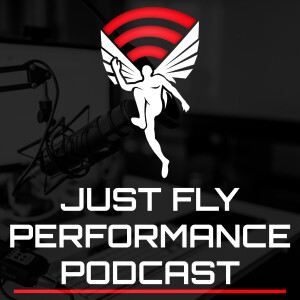
221: Christian Thibaudeau on Omni-Rep Training for Speed-Power Athletes | Sponsored By SimpliFaster
 2020-09-24
2020-09-24
Download
Right click and do "save link as"
Today’s podcast welcomes back coach Christian Thibaudeau to the podcast. Christian has been a strength coach for nearly 2 decades, working with athletes from nearly 30 sports. He has written four books and has pioneered multiple educational courses, including the Neuro-typing system, which goes in-depth on how to train athletes in the weight room (and beyond) based on their own individual dispositions.
Christian has been a 4-time prior guest on the podcast, and is a true wealth of information. Our recent episode, #208, had lots of great information about the topic of adrenaline as an over-training marker, as well as how to manage this hormone in the course of programming and the workout session. One thing that I had hoped to cover on that episode, but missed out on due to time constraints, was to get into Christian’s take on using the 3-muscle phases (concentric, isometric, eccentric) in training athletes.
Emphasizing various muscle phases in training is certainly nothing new. My own training design for athletes is often based on a hybrid of 14-day squat cycles, along with elements of the “Triphasic Training” system. Christian has been using rep-style emphasis in his programming for two decades, and has loads of practical ideas and training examples that can help us get a better understanding of these methods. You won’t find a more comprehensive episode out there on training using various contraction types than this one, as well as how each type fits into the individual characteristics and response of each athlete.
Finally, although not required, I’d recommend you check out episode 77 with Christian, which is a tremendous overview of the 5 different types of athlete according to their response and preference to training means and methods.
Today’s episode is brought to you by SimpliFaster, supplier of high-end athletic development tools, such as the Freelap timing system, kBox, Sprint 1080, and more.
View more podcast episodes at the podcast homepage.
Timestamps and Main Points
7:20 Why Christian is not going to write a book on golf training
14:05 Christian’s views on “alternative” forms of training, i.e. bodyweight, gymnastics, macebells, etc.
18:05 How the emphasis of “omni-reps” change when working with athletes vs. general population, and those simply interested in increasing strength and muscle size
24:20 How to approach hypertrophy training for athletes in regards to the neural intensity of exercises
30:35 Using all three types of muscle contractions in the same training week, versus using a single-mode and changing it every 2-3 weeks
39:20 Why you don’t need to train all three types of contractions to the same degree, in advanced athletes, versus novice and intermediate athletes
49:50 Particular phase of contraction methods that are most effective in regards to the three phases of muscle contraction
58:20 Dosage of advanced lifting methods in regards to adrenaline and neuro-type of the athlete
1:22.20 How plyometrics can complement or replace other phase-training methods in the process of the training cycle
“I have a lot of respect for strength coaches working with rotational athletes, it’s a very big challenge”
“Sometimes we do pure isometrics, but most of the time we do stato-dynamic contractions, which means we include pauses at various positions of the rep”
“With average people just wanting to look better, I moved more towards a body-part, antagonistic split (chest-biceps one day/quad-hamstring another day); the main difference is that with average people who just want to gain muscle, we train all three contractions in the same workout”
“The reason (for not doing all three modes of contraction in the same workout) is that athletes do other stuff than lifting; they are going to be sprinting, doing conditioning and practicing their sport. You want to keep neurological resources available you do not want to burn out your adregenergic rec...
view more
More Episodes
012345678910111213141516171819
Create your
podcast in
minutes
- Full-featured podcast site
- Unlimited storage and bandwidth
- Comprehensive podcast stats
- Distribute to Apple Podcasts, Spotify, and more
- Make money with your podcast
It is Free
- Privacy Policy
- Cookie Policy
- Terms of Use
- Consent Preferences
- Copyright © 2015-2024 Podbean.com





